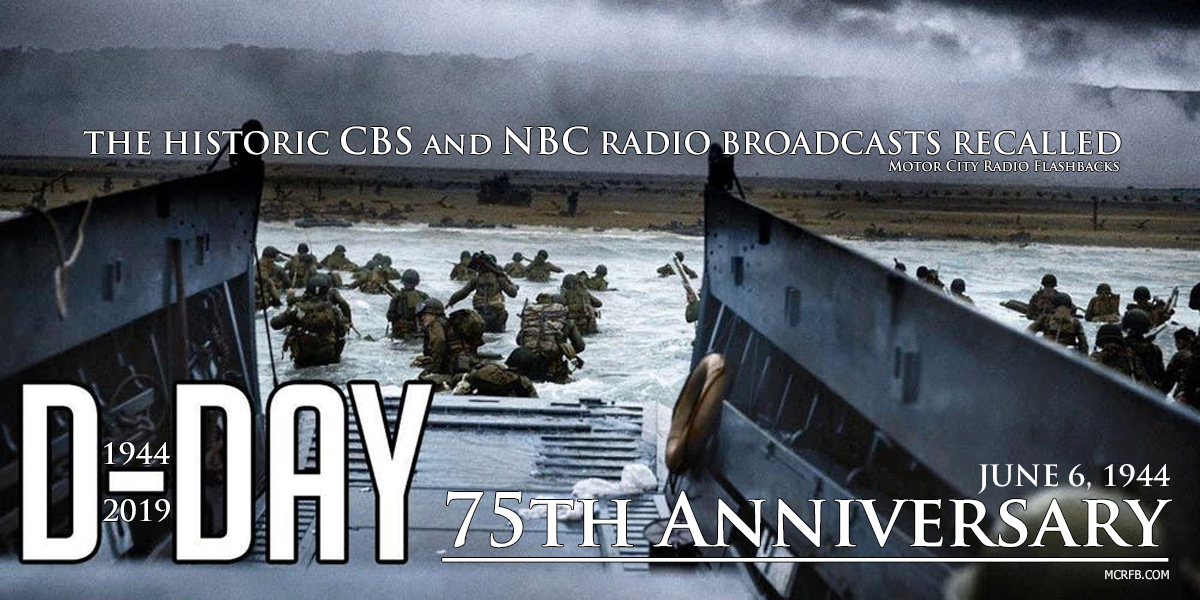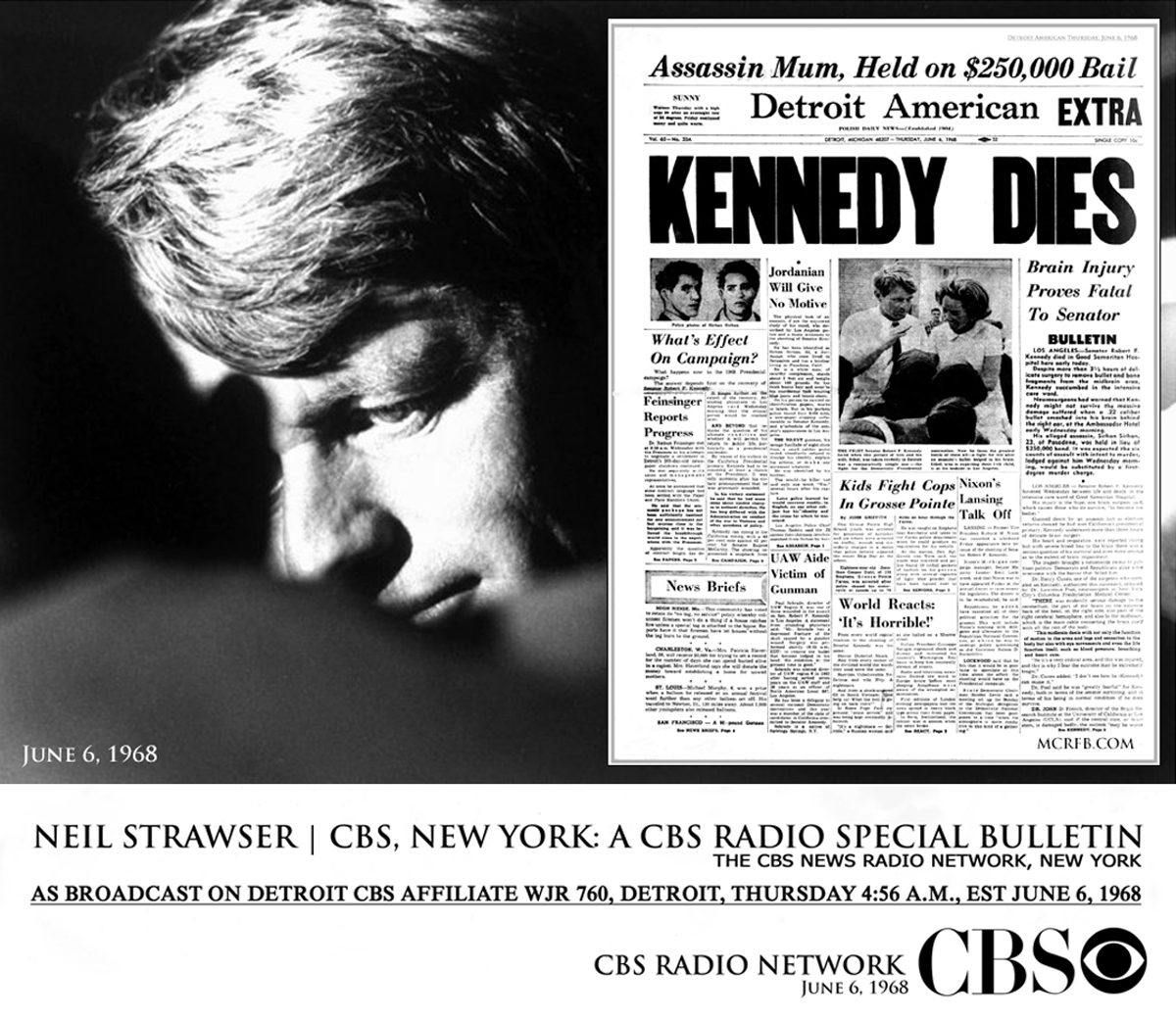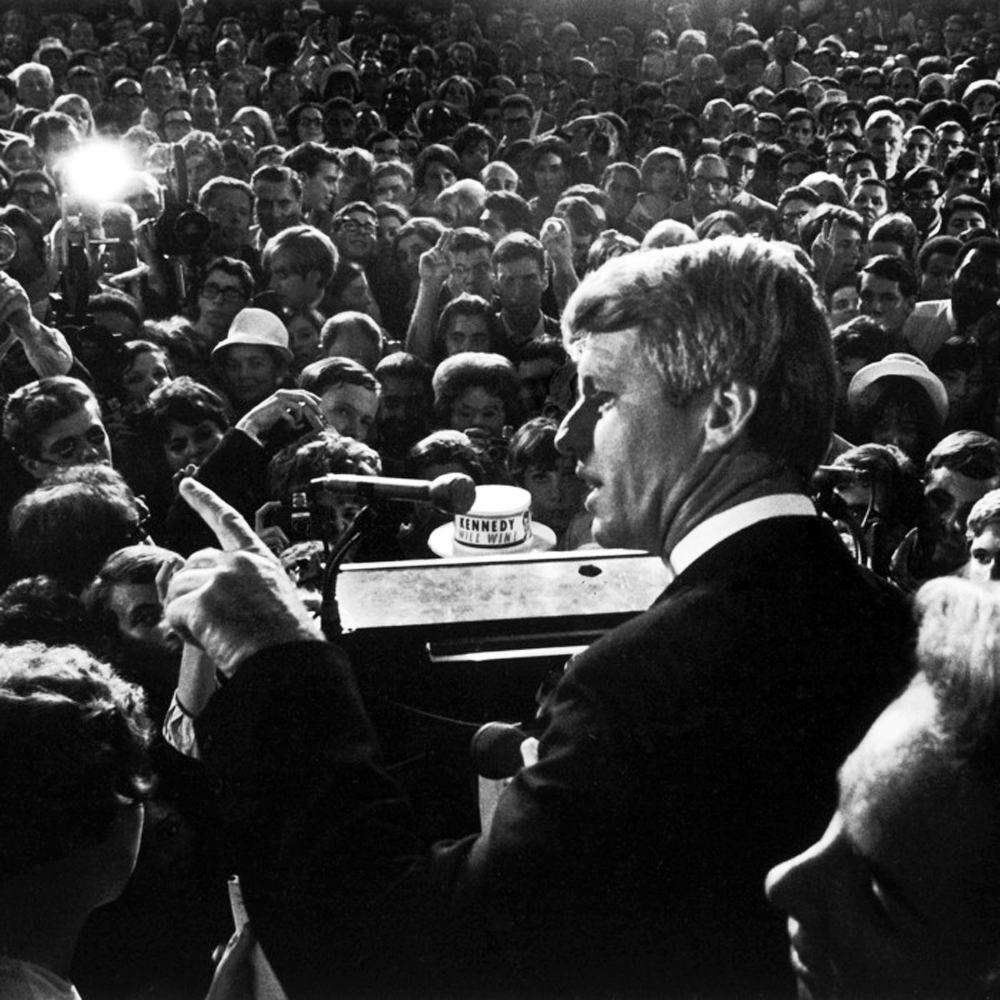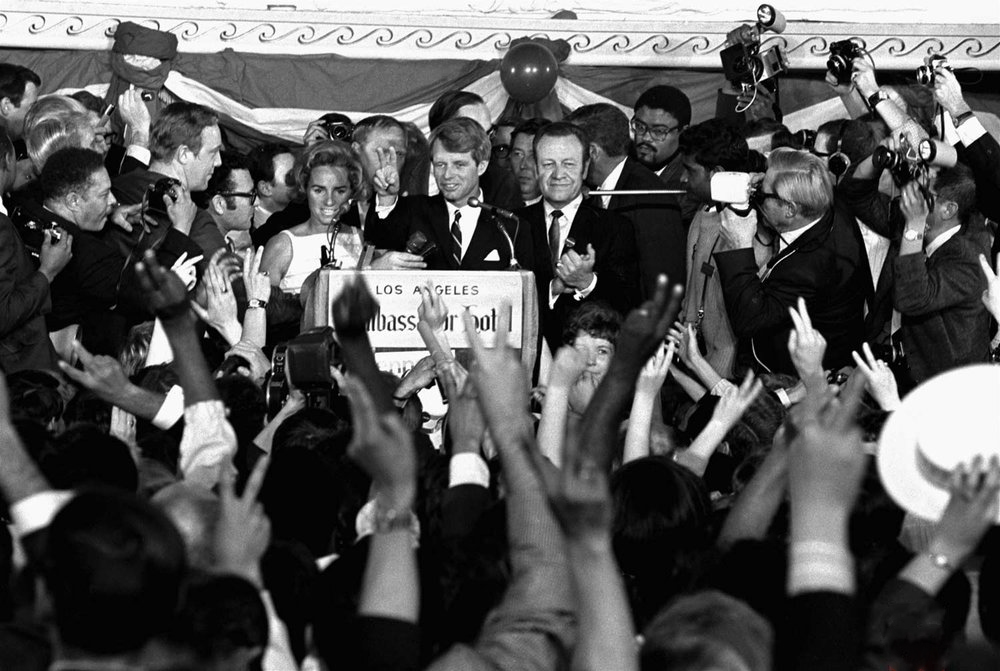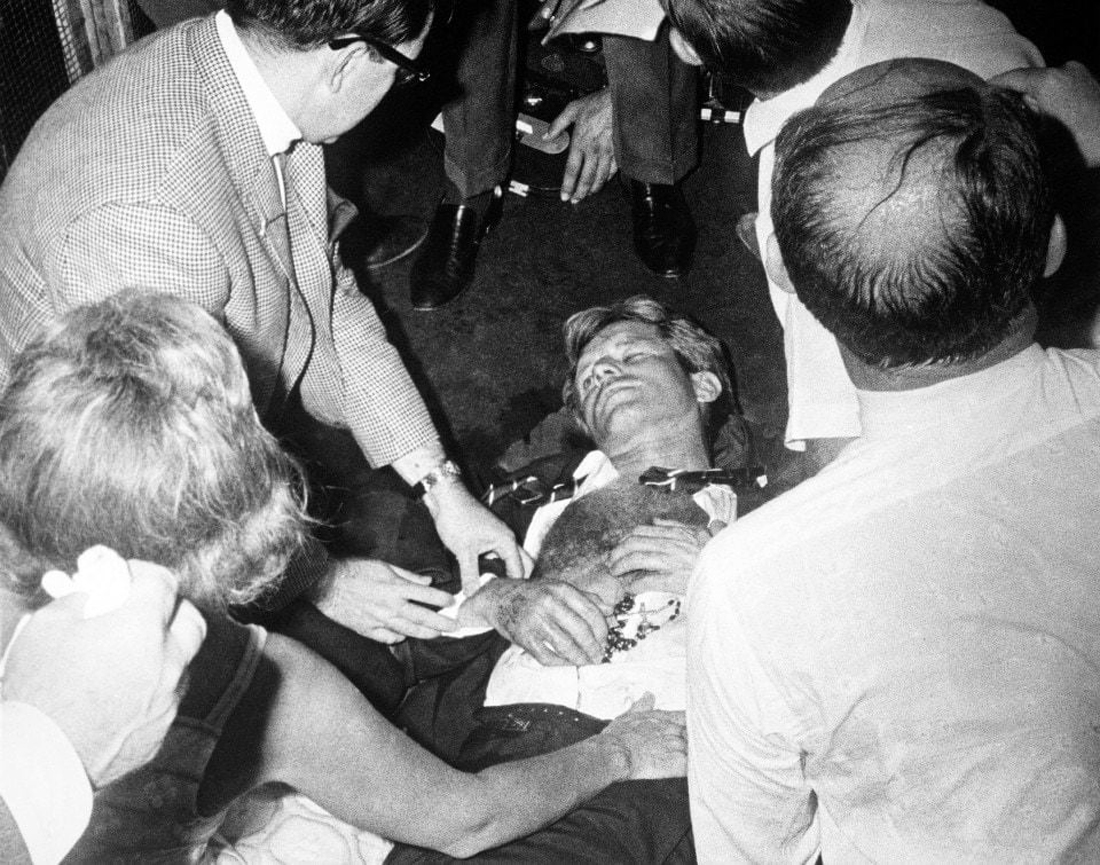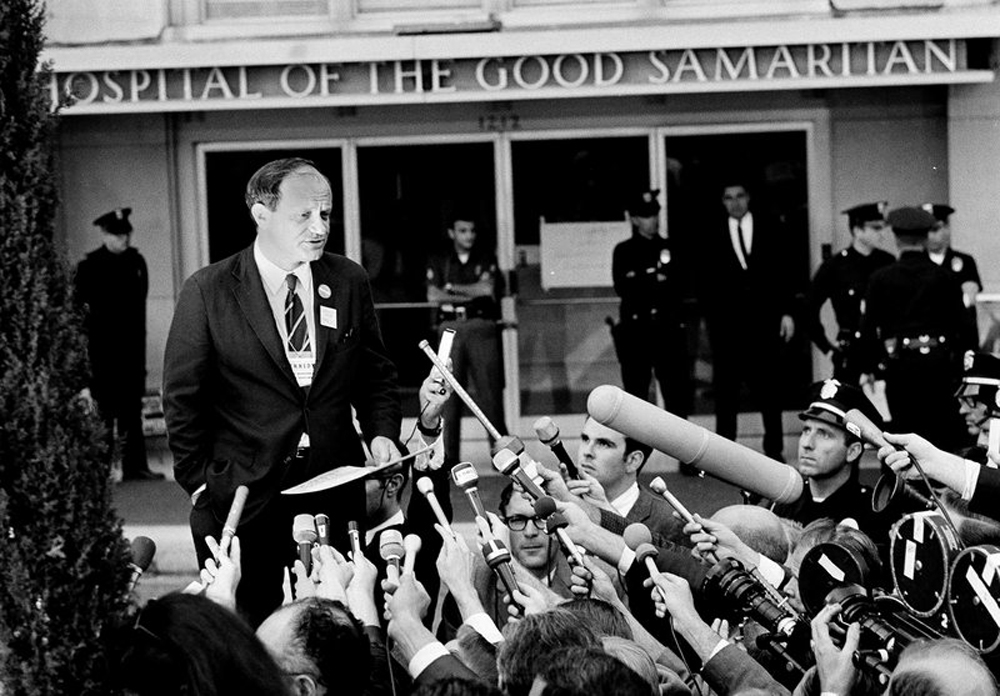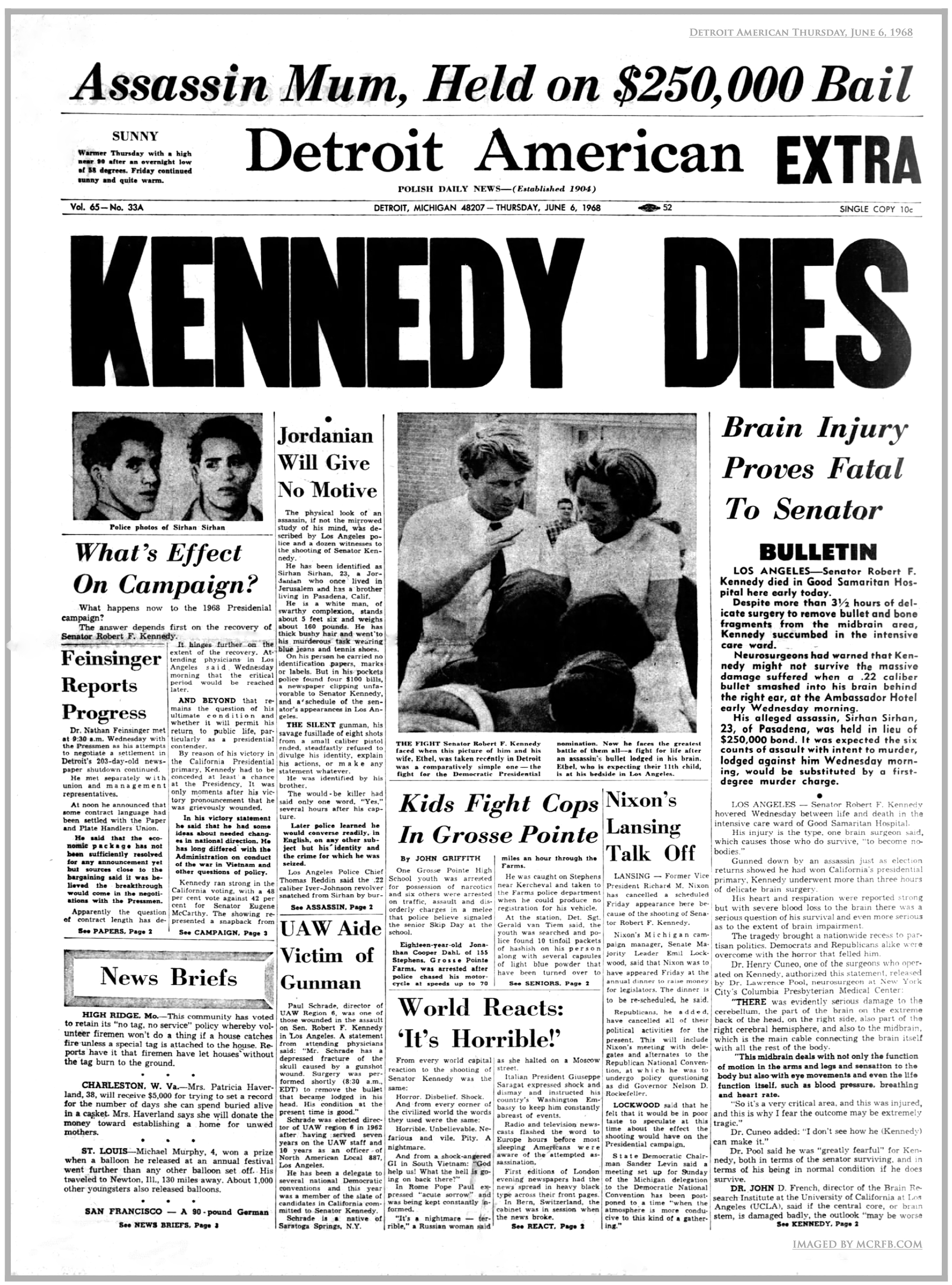CBS RADIO * Tuesday, June 6, 1944 * COLUMBIA BROADCASTING SYSTEM
D-DAY! INVASION AT NORMANDY
— June 6, 1944 —
Normandy landings were the landing operations on Tuesday, 6 June 1944 of the Allied invasion of Normandy in Operation Overlord during World War II. Codenamed Operation Neptune and often referred to as D-Day, it was the largest seaborne invasion in history. The operation began the liberation of German-occupied France (and later Europe) from Nazi control, and laid the foundations of the Allied victory on the Western Front.
Planning for the operation began in 1943. In the months leading up to the invasion, the Allies conducted a substantial military deception, codenamed Operation Bodyguard, to mislead the Germans as to the date and location of the main Allied landings. The weather on D-Day was far from ideal and the operation had to be delayed 24 hours; a further postponement would have meant a delay of at least two weeks as the invasion planners had requirements for the phase of the moon, the tides, and the time of day that meant only a few days each month were deemed suitable. Adolf Hitler placed German Field Marshal Erwin Rommel in command of German forces and of developing fortifications along the Atlantic Wall in anticipation of an Allied invasion.
The amphibious landings were preceded by extensive aerial and naval bombardment and an airborne assault—the landing of 24,000 US, British, and Canadian airborne troops shortly after midnight. Allied infantry and armoured divisions began landing on the coast of France at 06:30. The target 50-mile (80 km) stretch of the Normandy coast was divided into five sectors: Utah, Omaha, Gold, Juno, and Sword. Strong winds blew the landing craft east of their intended positions, particularly at Utah and Omaha. The men landed under heavy fire from gun emplacements overlooking the beaches, and the shore was mined and covered with obstacles such as wooden stakes, metal tripods, and barbed wire, making the work of the beach-clearing teams difficult and dangerous. Casualties were heaviest at Omaha, with its high cliffs. At Gold, Juno, and Sword, several fortified towns were cleared in house-to-house fighting, and two major gun emplacements at Gold were disabled, using specialized tanks.
The Allies failed to achieve any of their goals on the first day. Carentan, St. Lô, and Bayeux remained in German hands, and Caen, a major objective, was not captured until 21 July. Only two of the beaches (Juno and Gold) were linked on the first day, and all five beachheads were not connected until 12 June; however, the operation gained a foothold which the Allies gradually expanded over the coming months. German casualties on D-Day have been estimated at 4,000 to 9,000 men. Allied casualties were at least 10,000, with 4,414 confirmed dead.
The Allies planned to launch the invasion on 1 May 1944. The initial draft of the plan was accepted at the Quebec Conference in August 1943. General Dwight D. Eisenhower was appointed commander of Supreme Headquarters Allied Expeditionary Force (SHAEF). General Bernard Montgomery was named as commander of the 21st Army Group, which comprised all land forces involved in the invasion. On 31 December 1943 Eisenhower and Montgomery first saw the plan, which proposed amphibious landings by three divisions with two more divisions in support. The two generals immediately insisted that the scale of the initial invasion be expanded to five divisions, with airborne descents by three additional divisions, to allow operations on a wider front and to speed the capture of Cherbourg. The need to acquire or produce extra landing craft for the expanded operation meant that the invasion had to be delayed to June. Eventually, thirty-nine Allied divisions would be committed to the Battle of Normandy: twenty-two US, twelve British, three Canadian, one Polish, and one French, totalling over a million troops all under overall British command.
The Normandy landings were the largest seaborne invasion in history, with nearly 5,000 landing and assault craft, 289 escort vessels, and 277 minesweepers participating. Nearly 160,000 troops crossed the English Channel on D-Day, with 875,000 men disembarking by the end of June. Allied casualties on the first day were at least 10,000, with 4,414 confirmed dead. The Germans lost 1,000 men. The Allied invasion plans had called for the capture of Carentan, St. Lô, Caen, and Bayeux on the first day, with all the beaches (other than Utah) linked with a front line 10 to 16 kilometres (6 to 10 mi) from the beaches; none of these objectives were achieved. The five beachheads were not connected until 12 June, by which time the Allies held a front around 97 kilometres (60 mi) long and 24 kilometres (15 mi) deep. Caen, a major objective, was still in German hands at the end of D-Day and would not be completely captured until 21 July. The Germans had ordered French civilians other than those deemed essential to the war effort to leave potential combat zones in Normandy. Civilian casualties on D-Day and D+1 are estimated at 3,000 people.
Source: see ‘D-Day’ (above article edited; condensed); Wikipedia
WARTIME! JUNE 6, 1944
ABOUT THESE CBS and NBC RADIO BROADCASTS
*****
In the early morning hours of June 6, 1944, the CBS and NBC radio networks in New York took control of the news on their respective affiliated stations nationwide — special bulletins and all-day broadcasting of the reported allied invasion off the northern coast of France.
In 1944 the CBS Detroit affiliate was WWJ. The NBC Detroit (Blue Network) affiliate was WXYZ.
These historic CBS (WWJ 950) and NBC (WXYZ 1270) broadcasts was heard in wartime Detroit on the radio — this day — 75 years ago.
Today, Motor City Radio Flashbacks highlights the first three hours (of 24 straight hours) of the D-Day radio broadcasts as was reported on CBS and NBC radio, Tuesday, June 6, 1944.
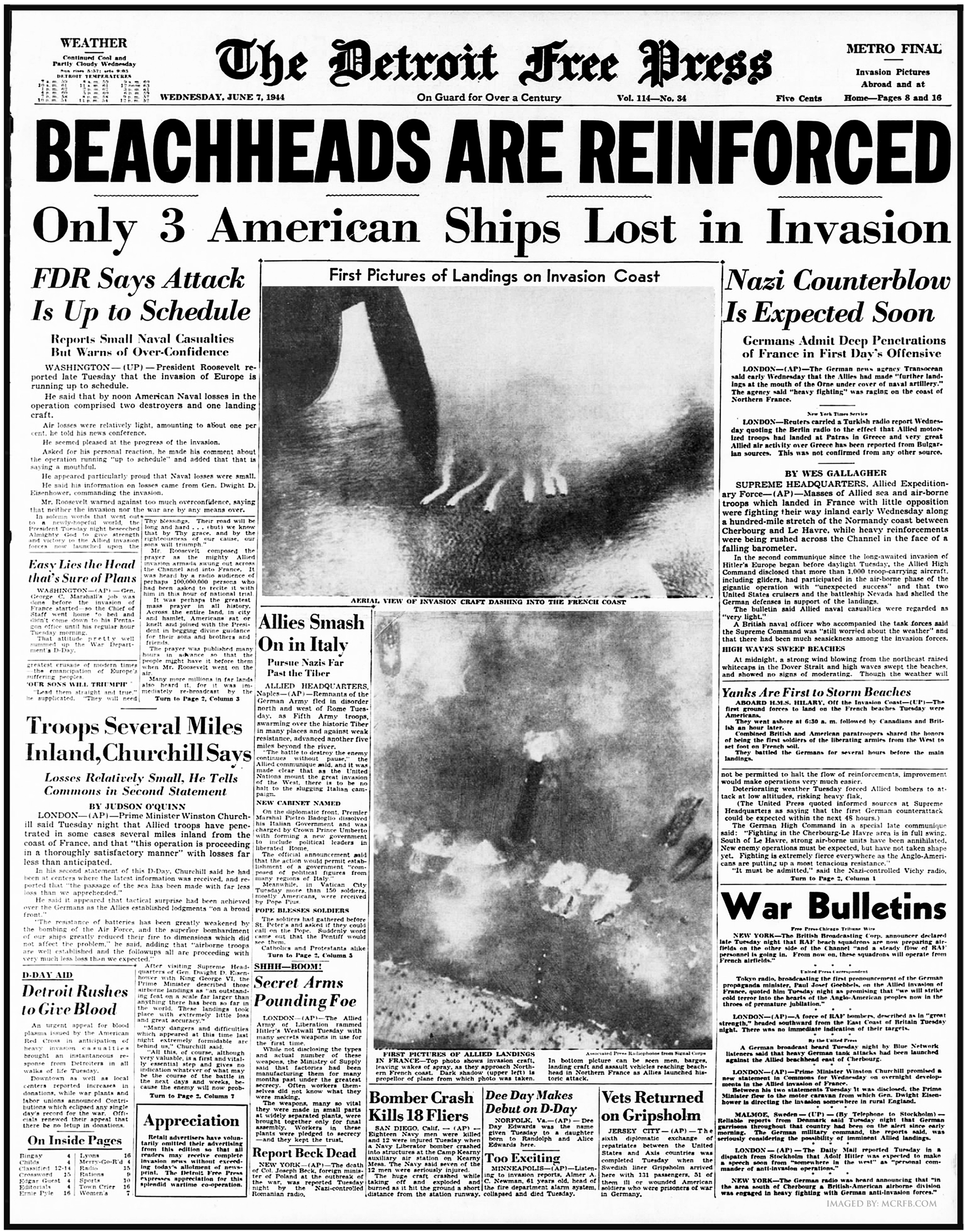
On your mobile device? Tap on above newspaper image. Open to second window. “Stretch” image across your device screen to magnify for largest print view.
On your PC? Click on the newspaper image 2x for largest print view.
NBC RADIO * Tuesday, June 6, 1944 * NATIONAL BROADCASTING COMPANY

![]()
